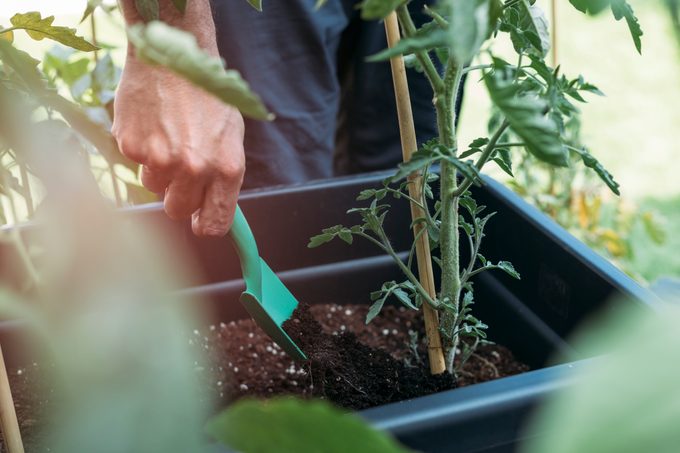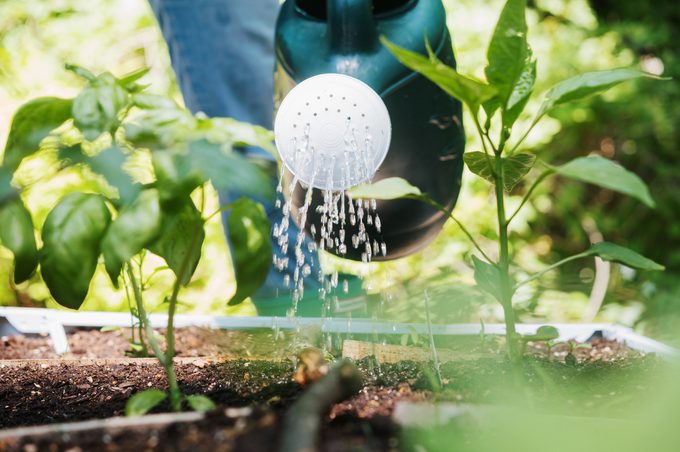Gardening is a forgiving hobby. If you forget to water once, plants will usually bounce back after their next good soak. But there are a few bad habits that can hold a garden back.
We asked two master gardeners to share some of the most common mistakes they see in the garden and how to fix them. Here are the things that master gardeners wouldn’t do in their own gardens — things you should avoid, too.
Not Testing Soil
Charlotte Ekker Wiggins, a University of Missouri Extension master gardener emeritus and award-winning author, opens with this classic newbie mistake: “Trying to garden without knowing what kind of soil they have.” Soil makes all the difference when choosing plants, fertilizers and amendments.
A simple, inexpensive soil test solves this problem. DIY home soil test kits are one option. However, Ekker Wiggins recommends contacting university extension offices, which “offer easy soil sample testing for $15-20 a test including recommendations of how to amend soil for the desired crops.”
Buying or Planting Too Much
Buying too many plants or seeds, or planting them too close together, is another common garden mistake. Not only can it lead to an unruly, unattractive garden, but Ekker Wiggins says “planting plants without room around them to grow can overtax the soil of nutrients resulting in less than healthy plants.”
Check the spacing before sowing seeds and be sure you’re not planting them too closely. You can save leftover seeds, but they do expire eventually, so be sure to use them next season.
When dealing with perennials, it can be tempting to plant them so they look full and lush now. However, when they reach their mature size, they’ll look overcrowded.
Instead, follow this advice from Haeley Giambalvo, a certified Texas Master Naturalist, member of the Texas Native Plant Society and owner of Native Backyards: “Spacing correctly from the get-go can save a lot of time and headache down the road by avoiding having to reposition or remove plants that have overgrown their space.”
Over-Fertilizing

Most plants don’t need to be fertilized as often as you might think. Garden fertilizers can even be detrimental to some plants, causing them to become leggy or to produce less fruit.
Ekker Wiggins cautions against over-fertilizing hanging baskets in particular. “It’s best to water hanging baskets with half to a fourth of the recommended fertilizer dose so the plants don’t expand roots, grow excessive foliage and have few blooms,” she says. She recommends slow-release granular fertilizers for beginner gardeners.
Mulching Too Close to Tree Trunks
Mulching around trees helps them retain moisture and weather the winter, but mulching incorrectly can do more harm than good. The wrong way, according to Ekker Wiggins: “Adding mulch up to tree trunks instead of leaving space between the trunk and the mulch.”
When mulching around your trees, leave three to five inches between the mulch and the tree.
Not Composting
We’ve already discussed the importance of testing and amending your soil, and compost is one of the best organic soil amendments. The best part? You can make it yourself for free!
Master gardeners know the power of compost and take full advantage of its nutritional power. Learning how to compost will take a garden to the next level, and it’s good for the environment, too. “Approximately 40 percent of all food in the U.S. is tossed out,” Ekker Wiggins says. “Put it to good use restoring the soil that grows our food.”
Planting Against Hardiness Zone
It’s possible to successfully grow plants from other climates. That’s actually the case for many annual flowers. However, it’s disappointing to plant what you think is a perennial just to find out it isn’t compatible with your USDA Plant Hardiness Zone.
“It can be tempting to buy one of every pretty flower you see in full bloom at the nursery,” says Giambalvo. “Many nursery flowers are native to other parts of the globe and require special care and babying to thrive in your climate. For that reason, I recommend new gardeners choose plants that are native to their local area.”
Watering Too Much, Too Little or at the Wrong Time

Watering too often is a common garden mistake that master gardeners see inside and outside. It can cause root rot and other plant diseases.
Research how much moisture each plant needs and water accordingly. Some like to dry out completely between waterings, while others like more consistently damp soil. Most houseplants do not need to be watered every day, and some don’t even need to be watered every week.
Underwatering plants is another issue master gardeners see a lot. Young outdoor plants in particular need regular watering. “Planting native plants does not mean they don’t need water,” Ekker Wiggins says. “Native plant seedlings need to be regularly watered until their roots get established.”
Giambalvo adds: “Even the hardiest of plants need time to adjust to their new location once they’ve been transplanted.” Give them plenty of water at first, then taper off as their roots develop.
Planting Without Considering Sunlight
When designing your garden or landscaping, consider more than aesthetics. A plant that would look fabulous in your sunny side yard might wither and die from too much direct light. Conversely, not all flowers are made to brighten up the shady corner under a tree.
Before you start planning which plants to buy, Giambalvo recommends monitoring your planting area and making note of the hours of direct sunlight it gets throughout the day. Research plants that will fit your chosen area’s light conditions, and always check the label before impulse buys at the nursery.
“Full sun plants thrive in an area that gets six or more hours of direct sun a day, while shade plants want less than four hours of direct sun a day,” Giambalvo says.
Weeding Completely by Hand
Once a garden is planted, weeding becomes an endless chore. Doing all that work by hand is a mistake master gardeners don’t make. With the right prep work, you can prevent a lot of the weeds from growing in the first place.
“I like to create a weed barrier by lining a garden bed with flattened cardboard boxes and then covering with a few inches of wood mulch,” Giambalvo says. Keeping plants and soil healthy will also help get rid of weeds in the garden.
Article source here: 9 Things Master Gardeners Wouldn’t Do in Their Gardens


No comments:
Post a Comment